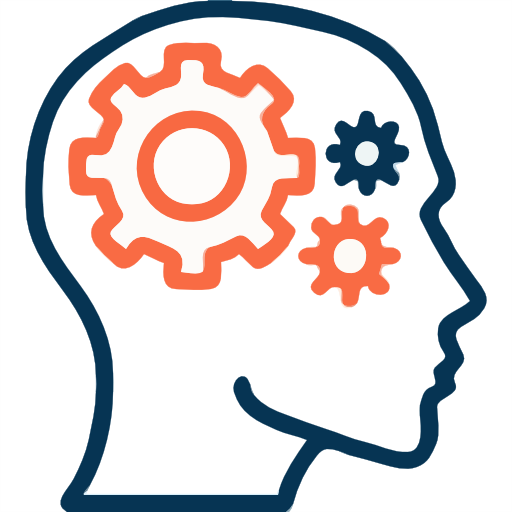Next-generation Adaptive learning platform, our ‘AI Tutoring platform’ , based on the latest research in artificial intelligence and cognitive sciences, has been awarded numerous international prizes. This personalized platform makes all types of learning content (school, higher education or professional training) adaptive and is available in SaaS mode.
The AI Tutoring Platform “EvidenceB inside” is the most innovative Adaptive learning platform on the market . Mixing the benefits of different types of artificial intelligence (generative and non-generative), it allows you to integrate the best of personalization into your training or educational content.
Several algorithms are implemented within our platform in order to offer you and your learners a personalized experience. This personalization is based on adaptive algorithms, including three main ones:
the adaptive testing algorithm put into play with the start of each module,
the algorithm called one-armed bandit ,
the so-called adaptive spacing algorithm for revision.
During the course, learners may encounter motivational messages of congratulations or encouragement resulting from their progress or interactive messages offering them help. The sending of these messages is based on automatic detection algorithms observing all the data generated by the learner in their use of the platform.
In addition, a clustering algorithm based on this same data establishes groupings of your learners according to certain criteria and will thus allow you to quickly visualize similar profiles in your classes/groups of learners for each module studied.
Description of AI algorithms
Adaptive tests are offered to each learner before the start of a new module. These tests aim to establish a rapid diagnosis of the learner’s different levels of mastery for the selected module. Thus, following the tests, the learner begins his course and the one-armed bandit offers him the exercises adapted to his diagnosis. The tests are called adaptive for two reasons:
The sequence of test questions is adapted and personalized to each learner based on their responses,
Following the test, the state of the one-armed bandit is adapted to the diagnosis obtained. If one wishes to test a skill on different levels of difficulty, passing the test at the intermediate level will lead to the test of the higher level. Conversely, failing the same intermediate level will lead to the test of the lower level and the higher level will automatically be considered as not mastered.
The one-armed bandit algorithm determines which activities are appropriate for each learner. More precisely, the one-armed bandit algorithm selects from a bank of activities the most useful exercises, at just the right level, to help the learner progress at their own pace. The goal of this algorithm is to keep the learner at a level of difficulty that is appropriate for their skills and knowledge. In other words, it offers the learner exercises that are easy enough not to frustrate them too much and difficult enough to induce progress and reduce the risk of boredom or weariness.
When using the platform and in particular when completing exercises in their personalized course, learners produce a set of digital data. This data is then used and some of it is presented in the dashboards made available to you.
In addition to visualization purposes, we use this data via a clustering algorithm. This algorithm allows you to group together in a relevant way the different learners in your class / group of learners according to their similarity on certain criteria. These groups (called clusters) presented in your dashboards are specific to each module and represent learners with similar profiles and difficulties. These clusters open the way to training and activities in small groups (also called ‘one-to-many’).
The AI Tutoring platform offers many possibilities for collaborative learning, in duo mode (two learners, one of whom has a better grasp of the concept), in workshop mode, in compilations or playlists mode, etc. The trainer/teacher always has control over the sequences and activities, allowing him to modulate the courses according to his own objectives and those of his organization.
Your success =
our success
We support each publisher in their innovation project to enrich their collections:
A Turnkey Integration
-
Fully cloud-based solution
-
Flexible technological framework
-
Configurable and adaptable
-
Single Sign-On (SSO) authentication
-
GDPR compliance for the education sector
A collaboration based on:
- Limited initial costs
- A royalty model on sales of the collection.
of EvidenceB

Cognitive Sciences

Artificial Intelligence

UX Interface

Cognitive Sciences
These include the latest advances from neuroscience and cognitive science research laboratories on how a child’s brain integrates new knowledge.
If all children in the world have a brain that functions according to the same universal principles, it is therefore possible to create educational modules adapted to the needs of each individual, regardless of the child’s culture and country of origin at each stage of their development.
EvidenceB modules integrate new didactic approaches, based on recent research in cognitive sciences in each discipline, in order to stimulate the acquisition of determining and structuring notions.
Cognitive science research is at the root of module design, whether it is the design of the architecture, the educational content, the types of activities or the functioning of feedback.

Artificial Intelligence
Artificial intelligence is about designing autonomous agents that interact rationally with their environment to achieve a given goal.
In the educational context, this ‘goal’ is often the adaptation of teaching to the individual needs of a learner – what is called adaptive learning.
The applications developed by EvidenceB integrate two artificial intelligence algorithms. The first, belonging to the family of “one-armed bandit” algorithms, optimizes educational paths by continuously offering each student exercises adapted to the student, whatever their level . The second is “clustering” and makes it possible to form groups of students who have similar learning characteristics . The teacher can then use the groups formed to differentiate their teaching at each level.
The teacher can rely on the information presented in dashboards to have a global and synthetic vision of his class and the progress of his students and therefore make educational decisions informed by the data, without overloading time.
The role of teachers therefore remains central throughout schooling and allows students to transform “an education for all” into “an education for each”.

UX Interface
User experience (UX) is the quality of the user’s experience in digital or physical environments. The notion of user experience marks a transdisciplinary evolution in the way of conceiving the user’s relationship to technical systems and of considering their ergonomic quality. In the educational sector, digital educational uses are the subject of fundamental research.
Alongside cognitive scientists, EvidenceB learning modules have also been developed by UX experts who have designed playful interfaces aimed at maintaining student motivation. Both familiar and captivating, these interfaces arouse and maintain their curiosity and involvement, while avoiding any cognitive overload.
The educational experience is the subject of an evidence-based approach , documented by researchers in the field during scientific experiments carried out in the field, with the participation of students and teachers.
Discover our solutions
Want to know more about the resources developed by EvidenceB?
Contact us to test a demo. We will answer all your questions.
